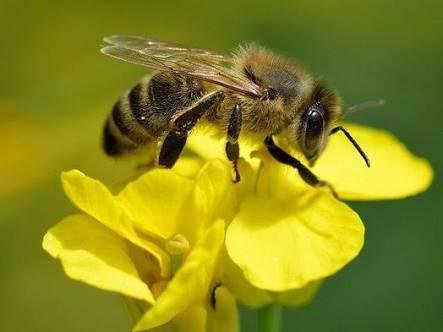INTRODUCTION
A bee is an insect which belongs to the same family as wasps and ants. It is a monophyletic insect which means that it has only one phylum. A bee has a pair of compound eyes and three simple eyes . The body is divided into head, thorax and abdomen and it has three pairs of legs. The legs has hairs which it uses to brush it's face-how cute!
Photocredit
The hind legs has structures known as pollen bags which it uses to store pollen collected from flowers. It has a pair of wings.
SPECIES
There are different specie of bees. Perhaps the commonest is the European honeybee. However, other species exists which include the Stingless bee and the bumblebees. Bees mostly live in colonies though there can be solitary forms.
COLONY
Each colony has a queen, a king and workers which maintain a high pedestal of altruism. Workers have been known to let down their lives just to protect their colonies and hive.
Each colony live in a hive

ECONOMIC IMPORTANCE
The European honeybee is very important to humans as it produces honey, which is a rich source of nutrients. Apart from serving as food, honey has also been used in alternative medicine as a cure for a wide spectrum of ailments ranging from cancer to simple wound dressing . However, the effectiveness of this treatment has not be confirmed by evidence-based medicine.
Bees also produce beeswax and Royal Yelly. All these products are of economic importance to man. Most importantly, because of their role in pollination, bees have been used in commercial quantities for the pollination of flowers of commercial crops.
DEFENSE
Bees defend themselves and their colony by stinging. This is made possible by a receptacle of poisonous liquids at the rear end of the bee. When a bee sits on the assailant, it releases this poisonous liquid which elicits serious pain and swelling.
CONCLUSION
Due to the abundant economic importance of BEES, farmers have raised bees in artificial hives for centuries now. This ensures that the invaluable products which they are known for, are never in short supply.

I am yhutie.



This statement is a bit confusing. It's like you're saying that a bee is an insect which belongs to the same family as insects. I suggest you erase the second "insects" word in that particular sentence.
I suggest you write some references that you used to create this particular article. It would be beneficial for us, readers.
thank you. This has been corrected
Good one